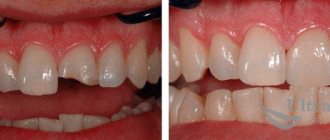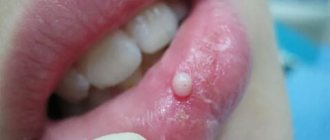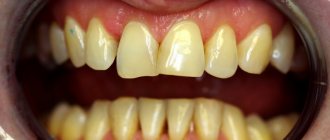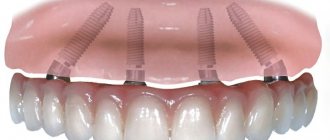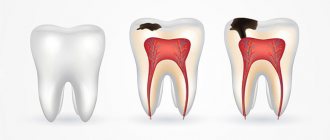Palate cancer is a malignant neoplasm that forms from the mucous membrane of the hard and soft palate. This is a fairly rare disease. It is more common between the ages of 40 and 60 years. Men get sick 4 times more often than women.
Diagnosis of cancer of the soft and hard palate at the Yusupov Hospital is carried out using modern research methods. The oncology clinic is equipped with modern equipment from leading American and European manufacturers, which allows you to quickly establish an accurate diagnosis. To treat malignant tumors of the palate, surgical interventions, chemotherapy drugs and innovative methods of radiation therapy are used.
The most malignant tumor of the palate occurs due to metastases of cancer of the nasopharynx and nose. The neoplasm affects the periosteum of the hard palate, lower and upper jaws, muscles and tissue of the oral cavity, and tongue. Atypical cells spread to the submandibular, mental and cervical lymph nodes.
Classification of palate cancer
Based on location, cancerous tumors are divided into 2 types of malignant tumors of the palate. In case of cancer of the hard palate, the malignant neoplasm is located at the border of the nasopharynx and the oral cavity, affects the bone structures and spreads to all layers of the oral mucosa. In the case of cancer of the soft palate, the tumor is localized in the mucous layer and muscles of the vault of the oral cavity.
Based on the histological structure of the tumor, there are 3 types of malignant neoplasms of the palate:
- Cylinder;
- Adenocarcinoma;
- Squamous cell carcinoma.
Cylindroma (adenocystic carcinoma) is formed from glandular tissue. It is characterized by rapid, uncontrolled growth of pathologically altered cells and quickly metastasizes. Adenocarcinoma develops from the epithelium of the oral cavity. The tumor can be localized in all parts of the hard and soft palate. Squamous cell carcinoma is the most common type of oral malignancy. The tumor affects the mucous membrane.
Preliminary determination of lump symptoms
A lump on the palate is the cause of a dental disease or inflammatory process. Each type of growth has its own causes and subtleties of symptoms, and therefore requires separate consideration.
Angioma
Angioma is a tumor in the palate caused by disruption of processes in the tissues of the blood vessels of the soft palate. The shape of the cone resembles a rolled corkscrew. The tubercle has a blue or purplish-black characteristic color. The ball is a product of a disorder in the development of blood vessels, so the color is caused by the excess amount of blood in the formation.
Pressure causes bleeding, which should not be experimented with. There is a pulsating response to pressure.
Such a lump on the upper palate is life-threatening for the patient. Bleeding is difficult to stop, and large blood loss is fatal.
At the first signs of such compaction, you must seek qualified help.
Cyst
A lump in the mouth on the palate is classified as a cyst when a hard ball appears on the palate and its size does not exceed 12 cm. The cyst appears due to a disorder of the sebaceous glands. It won’t hurt, but it will make it significantly more difficult to eat, and then completely disrupt the correct functioning of these secretions.
A cyst on the palate requires surgery and can only be treated with it.
Pemphigus
Children are most susceptible to developing pemphigus. It pops up in the shape of a white ball at the top of the mouth. The bumps are a consequence of erosion and later develop into ulcers. When pressed it bleeds and hurts. Diagnosed by visual examination and using the Nikolsky method.
If the tumor is not removed, erosion will develop into massive exfoliation of the oral epithelium, disruption of digestive processes, and general weakness. If there is no treatment, the bumps become widespread. Pressure causes rupture of tumors, the contents of which cause intoxication of the body.
Myxoma
A myxioma is a hard, white growth at the top of the mouth. The disease affects the hard part of the palate, and upon visual examination it is almost invisible; pressure on the tumor is not felt. This significantly complicates diagnosis and delays the patient’s visit to the doctor.
The diagnosis can be confirmed or refuted by a biopsy of the palate.
Oncological disease
Cancerous lump is classified into two diseases:
- Hard palate cancer - starting from the bone tissue between the nasopharynx and the palate, the disease spreads to all mucosal tissues.
- Cancer of the soft palate - a lump appears due to an oncological process in the muscle and mucous tissues of the mouth.
Additionally, the oncological tubercle on the roof of the mouth is divided according to the tissue from which the spread of the disease began:
- Cylinder - the maternal tissue is the tissue of the glands, the cancer spreads quickly and invades the oral cavity;
- Adenocarcinoma - begins expansion of the mouth from the soft tissues of the cavity;
- Squamous cell carcinoma is a malignant formation that begins to develop from the tissues of the mucous membrane.
Causes and risk factors for palate cancer
Malignant tumors of the oral cavity occur under the influence of the following provoking factors:
- Irritating effects of aggressive substances contained in cigarettes, alcohol, smoking mixtures;
- Constant consumption of too hot dishes, which burn the mucous layer and change the structure of cells;
- Chronic injury to the palate due to poorly installed dentures.
A tumor in the palate develops against the background of precancerous conditions of the oral cavity - leukoplakia, papillomatosis. They often degenerate into a cancerous tumor under the influence of provoking factors.
Risk factors for the development of malignant neoplasms of the palate include hereditary predisposition, periodic inflammatory diseases of the oral cavity, vitamin A deficiency, which occurs with poor nutrition or in smokers due to a disruption in the process of its absorption in the body. Palate cancer can be a secondary disease - metastases of malignant neoplasms of the neck and head.
The first signs and symptoms of palate cancer
During the first weeks and months, malignant neoplasms may occur without subjective sensations. In some cases, patients, when touching the palate area with their tongue, notice a small compaction that is surrounded by a cushion. If the patient consults a doctor at this stage of the pathological process, treatment is most effective.
As the cancer progresses, the size of the tumor increases. The tumor invades new areas of the palate and grows deeper. Patients present the following complaints:
- Pain in the oral cavity, which radiates to the ear, temporal region of the head;
- Discomfort while eating, as the process of chewing and swallowing becomes difficult;
- Bad breath;
- Unpleasant taste;
- The change in speech articulation is disrupted due to the fact that the mobility of the tongue changes, and the tumor interferes with the normal movement of air.
- Poor appetite;
- Noticeable weight loss;
- Rapid, unreasonable fatigue.
When examining the oral cavity, plaques, compactions, and ulcers of various shapes and sizes can be seen on the roof of the mouth. In advanced cases of palate cancer, the ulcers bleed and the septum between the nose and throat may collapse. For this reason, pieces of food get into the nose while eating, and speech becomes completely slurred. At the last stage, the cancer tumor destroys all tissue adjacent to the palate.
Solid sky
The hard palate (palatum durum) is a septum separating the oral cavity from the nasal cavity and is formed by the palatine processes of the upper jaw and the horizontal part of the palatine bone. In the anterior section, the hard palate is represented by the incisive bone, which fuses with a bone suture to the palatine processes in adulthood.
The hard palate has two surfaces: the oral, facing the mouth, and the nasal, which is the bottom of the nasal cavity. Both surfaces are lined with mucous membrane and communicate with each other through a large number of blood vessels passing through holes in the bones of the hard palate (Fig. 6). A suture runs through the middle of the hard palate.
The height of the hard palate varies from person to person and changes with age. A newborn has a flat hard palate. With the development of the alveolar process, the palatal dome is formed. Anomalies, such as narrowing of the dentition, can change its configuration. With the loss of teeth and atrophy of the alveolar process, the hard palate gradually becomes flat.
When planning various orthopedic treatment measures, it is important to take into account the age-related features of the development of the palatal suture. In a newborn, the palatine processes are connected by connective tissue. Gradually, bone tissue begins to penetrate into it from the side of the palatine processes in the form of spikes, and by the time the teeth are changed, the palatal suture turns out to be pierced by bone teeth, moving towards each other. With age, the layer of connective tissue decreases and the suture becomes tortuous.
By the age of 35-45, the bone fusion of the palatal suture ends. The presence of connective tissue in the suture line makes it possible to move the upper jaws apart while narrowing the dentition due to the divergence of the palatine processes. With bone fusions, this possibility is excluded.
With the replacement of connective tissue by bone, the suture acquires a certain relief - smooth, concave or convex (Fig. 7). With a convex suture relief, there is often an excess of bone tissue, palpable on the surface of the hard palate in the form of a dense bone ridge, often oval in shape (palatine torus). Along with the oval, there is a lanceolate, ellipsoidal, hourglass-shaped (with a constriction in the middle) and, finally, irregular shape. The variability of the shape and location of the palatine torus gives reason to believe that it is not only a consequence of the overgrowth of the suture, but also other reasons that are still little known. It is possible that the palatine torus is a thickening of the cortical plate caused by functional irritations. The torus is usually located to the right and left of the midline and is rarely unilateral. In different people it is presented differently: in some it is moderate, in others it reaches a significant value, interferes with prosthetics with removable plate prostheses and has to be removed surgically.
The hard palate is covered with a mucous membrane, which, through connective tissue, firmly fuses with the periosteum. At the site of the transition of the hard palate into the alveolar process, a space remains between the mucous membrane and the bone surface, which narrows anteriorly and widens as much as possible at the greater palatine foramen. It contains the largest vessels and nerves of the hard palate (Fig. 8).
On the surface of the mucous membrane of the hard palate in the midline, slightly posterior to the central incisors, there is a smooth oblong elevation - the incisive papilla (papilla incisiva), having an average diameter of about 2 mm and a length of 3-4 mm. It corresponds to the opening of the incisive canal. In the anterior part of the palate, 3 to 6 palatine transverse folds (plicae palatinae transversae) extend to the sides from its suture. In shape, these folds are often curved, can be interrupted, and can also be divided into branches. In newborns, these folds are well defined and play an important role in the sucking function. In middle age they become less noticeable and may disappear.
On the border between the hard and soft palate on either side of the midline there are often pits (foveola palatina), sometimes expressed only on one side. These pits are landmarks not only for determining the boundary between the hard and soft palate, but also for determining the boundaries of the removable denture.
The vascular fields of the hard palate, which provide vertical compliance of the mucous membrane, are located in a triangle limited on one side by the base of the alveolar process, on the other side by a line drawn lateral to the palatal suture (Fig. 9).
Diagnosis of cancer of the soft and hard palate
The resulting cancerous tumor of the palate is difficult to determine independently in the early stages. If the pathological process has affected large areas of the soft or hard palate, a preliminary diagnosis can be made after a visual examination of the oral cavity.
To confirm the diagnosis, oncologists at the Yusupov Hospital perform the following diagnostic procedures:
- X-ray – finds pathological changes in bone tissues adjacent to the oral cavity;
- Biopsy – taking a piece of tissue for histological examination (analysis is necessary to identify altered tumor cells and its type);
- Blood tests - signs of anemia;
- Radioisotope examination - allows you to examine the structure of the neoplasm.
Ultrasound examination is carried out to detect cancer metastases in distant organs. Patients of the Yusupov Hospital can undergo complex diagnostic procedures in partner clinics and receive advice from leading dental oncologists in Moscow.
Treatment of palate cancer
The choice of treatment method for cancer of the hard and soft palate depends on the histological type and stage of the malignant tumor, the extent of the pathological process to nearby tissues. The main method of treating the disease is irradiation of a malignant neoplasm of the palate with X-rays. Radiation therapy can stop the development of cancer cells. If it is started at an early stage, complete destruction of the malignant neoplasm is possible. Radiation is performed before and after surgery.
Surgery for palate cancer involves removing the tumor and the soft tissue and bones located next to it. After surgery, a defect remains on the face, to eliminate which plastic surgery is performed. In advanced cases of cancer, surgery and radiation therapy sessions are performed.
For palate cancer, treatment is carried out with cytostatic drugs. They are administered as droppers or prescribed for oral administration. Chemotherapy for cancer of the soft and hard palate is effective in combination with radiation and surgery. The action of chemotherapeutic drugs is aimed at preventing and eliminating metastatic foci.
Timely diagnosis and selection of a well-designed treatment regimen allow doctors at the oncology clinic to achieve an almost complete cure for 80% of patients. If you experience unpleasant sensations in the oral cavity, contact oncologists and make an appointment by calling the Yusupov Hospital.
Treatment of cones
The treatment methodology depends on the specific case. The approach is determined by:
- the presence of pain;
- part of the cavity that has been infected (upper, lower);
- time elapsed since the onset of the disease;
- reaction of the cone to pressure.
Treatment of angioma
Removing a lump of this type occurs in three stages:
- Drug treatment and treatment;
- Surgery;
- Radiation therapy.
At the first stage, alcohol is used: it constricts blood vessels and helps eliminate high blood loss during surgery.
Then, in the case of the capillary form, radium therapy is used, it consolidates the effect of treatment, and sometimes can act as an independent drug and cure the disease completely.
It is prohibited to treat the cavernous form of angioma with radium. It can help transform the lump into a malignant one, which can greatly worsen the patient’s condition.
Treatment of pemphigus
A lump of this type that appears on the palate is treated mainly with antibiotics and a diet that includes a high content of proteins and vitamins, but without salt.
If such a lump appears, it is necessary to use disinfectant solutions. In severe forms, blood transfusions are used.
Treatment of myxoma and cysts
In these forms of the disease, the attending physician prescribes antiseptic drugs and prepares the cavity for surgery (if there are signs of accelerated growth of the lump into the tissue).
Additional methods of electrical treatment are also used, which make it possible to artificially kill tissue without the use of a scalpel, but all methods of this type are dangerous, thanks to them, a malignant formation may appear in place of a benign one.
Treatment of cancer
Cancer requires immediate intervention by a qualified specialist. The earlier the stage of the disease, the less harm the treatment and the disease itself will cause to the body. If a cancer lump appears, the following treatment approaches are used:
- Radiation therapy – the cancerous growth is irradiated with X-rays. In the early stages, it completely cures the disease.
- Surgical intervention - not only the harmful lump is cut out, but also the tissue around it, in order to exclude relapses. Such an intervention leaves defects on the face, which can later be corrected with plastic surgery.
- Chemotherapy - taking cytostatics.
For the cancer in question, chemotherapy is effective only in combination with radiation and surgery.
It is easier to defeat any disease at its inception stage. But in the case of bumps on the palate, it is better not to have the disease than to treat it later.
The root causes of the disease have not been fully established. Therefore, following the hypothetically formed rules will not completely protect you from the disease, but it will definitely reduce the chance of developing a similar problem. A preventative visit to the dentist will ensure timely treatment, even if the lump pops up unnoticed.
Category Miscellaneous Published by Mister dentist


